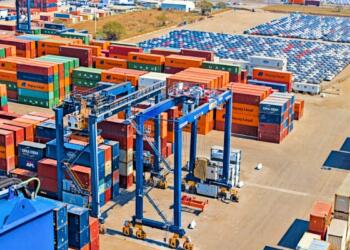
During the month of August, the Average Time Index for Motor Transport in Ports (ITPAP) registered a notable improvement compared to the previous month, falling by 56%, from 29 hours and 45 minutes to 13 hours and 7 minutes. Among the reasons that could explain this reduction, it is worth noting that during the eighth month of the year, the National Customs Agency of Mexico (ANAM) did not suffer system outages, as it did a month before. Also, the fact that ports such as Manzanillo, the busiest in the national port system, extended the operating hours of its customs to compensate for the inconveniences that collapsed the port at the end of July and a higher level of operations.

Although the decrease in times in the eighth month is positive, compared to the data from the previous month, the indicator is still far from the most efficient times recorded in this first year of measurement, in the months of March and May, when the index was just 3.9 hours.
It should be noted that, although cargo volumes in August were higher than those moved during the third and fifth months of the year, these were only 21.9 and 15.76% higher, respectively; while the times more than double the standard that the logistics links reached in those months when they were more efficient. In short, there should be the capacity and processes to make the operation of auto transport in ports even more efficient , and thus positively impact the logistics costs that we have as a country.
The ITPAP is a measurement carried out by the T21 Business Intelligence unit of the travel and waiting times of trucking units in the four main ports of the country (Altamira, Veracruz, Manzanillo and Lázaro Cárdenas). The information is obtained using the GPS of service provider companies and trucking companies in their port entry processes, loading/unloading maneuvers at the terminal and the waiting time to cross customs.
Last August, the sample covered a universe of 2,568 auto transport units , whose measurements were the basis for the creation of the indicator.
Among the four main ports serving the country’s trade, Lázaro Cárdenas was the one that improved the most in the index by reducing its times with respect to July by 59% , followed by Altamira with 58.4%, Manzanillo with 56%; and, finally, the port of Veracruz with a 43% improvement.
Of the three phases measured by the indicator, it is observed that the waiting time for goods to clear customs remains the one that consumes the most time in the circuit, fluctuating between 50 and 45 percent. Dead times in the process generate costs that, obviously, do not add value to our country’s supply chain and do increase the final prices of the goods when they reach the consumer and have an impact on the national inflation rate.
Comment and follow us on X: @GrupoT21



















